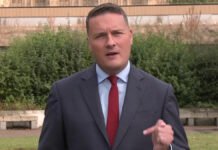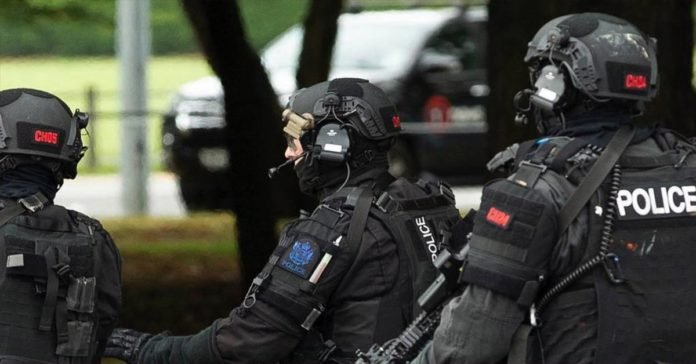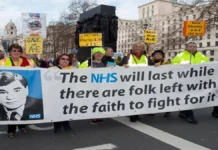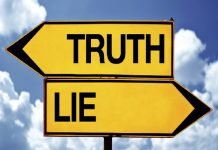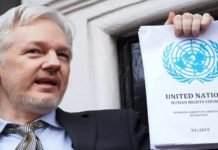At least 49 people were killed and 20 seriously injured in mass shootings at two mosques in the New Zealand city of Christchurch Friday, in a carefully planned and unprecedented attack that has shocked the usually peaceful nation.
New Zealand’s Prime Minister, Jacinda Ardern, called the incident a terrorist attack in a Friday press conference, saying the suspects held “extremist views” that have no place in New Zealand or the world.
The attacks targeted two mosques in central Christchurch at lunchtime local time Friday.
A total of 48 people, including young children with gunshot wounds, were admitted to Christchurch hospital for treatment.
Three people were arrested in connection with the shootings. A 28-year-old man was charged with murder and will appear in court Saturday morning local time.
Two others were arrested on possession of firearms and police are still trying to understand their involvement, said New Zealand Police Commissioner Mike Bush. On Friday night local time police tweeted that the pair remain in custody.
Australian Prime Minister Scott Morrison said that at least one of those arrested is Australian. He said the shooting was the work of an:
“extremist right-wing, violent terrorist.”
Police said they do not believe there are any other suspects but added that it was still an open investigation.
None of the three people arrested in connection with the attacks had been on any security watch lists prior to the attack.
Attack apparently broadcast live on social media
Authorities said they “will not be discussing the offenders’ possible motivations or the causes of this incident” at this stage.
However, in a social media post just before the attack, an account that is believed to belong to one of the attackers posted a link to an 87-page manifesto that was filled with anti-immigrant, anti-Muslim ideas and explanations for an attack. The manifesto was not signed.
In addition, police are aware of a video shared online and broadcast live during the attack, which purports to show a gunman walking into an unnamed mosque and opening fire.
“We would strongly urge that the (video) link not be shared. We are working to have any footage removed,” the New Zealand police said.
In a statement, a spokesperson for Facebook New Zealand, Mia Garlick, said videos that appeared to show the Christchurch shootings were quickly taken down.
“New Zealand Police alerted us to a video on Facebook shortly after the livestream commenced and we removed both the shooter’s Facebook account and the video. We’re also removing any praise or support for the crime and the shooter or shooters as soon as we’re aware,” she said.
A spokesperson for Google and YouTube issued a statement calling the shooting a “terrible tragedy.”
“Shocking, violent and graphic content has no place on our platforms, and is removed as soon as we become aware of it,” read the statement. “As with any major tragedy, we will work cooperatively with the authorities.”
Twitter has removed an account it believes is linked to the suspect in the shooting and is working to keep the video of the incident off its platform, a spokesperson said.
“We are deeply saddened by the shootings in Christchurch today,” Twitter said in a statement. “Twitter has rigorous processes and a dedicated team in place for managing exigent and emergency situations such as this. We also cooperate with law enforcement to facilitate their investigations as required.”
One person has been charged with murder in connection with the terror attack on two mosques in New Zealand that left at least 49 people dead.
Self-indulgent document
Australian media reported that Brenton Tarrant was originally from Grafton, a town 600km (370 miles) north of Sydney, and had previously worked at a fitness facility.
“He never showed any extremist views or any crazy behaviour,” his former boss, Tracey Gray, told Seven News.
In the 16,500-word document, the man says he began planning an attack after visiting Europe in 2017 and being angered by events there.
The document is called “The Great Replacement” – it’s not something just dreamt up, but the title of a loose global movement that has been rapidly growing online.
The central tenet of the conspiracy is that “European peoples” are dying out and being “replaced” by immigrants with a different, inferior and dangerous culture. This is basically a code for hatred or fear of Muslims.
Part of the theory is that states and corporations are encouraging “white genocide” by pushing up immigration rates purely to keep global capitalism going. Occasionally, the theory dips into anti-Semitism and neo-Nazi beliefs by blaming Jews for the world economic system.
The phrase The Great Replacement first emerged in France.
Its most public advocates include followers of Generation Identity, a European anti-Islam movement.
But more importantly, the conspiracy is a central part of a vast and growing range of online forums – particularly hidden groups on Facebook and other social media platforms.
It’s in these groups that believers, divorced from facts and trusted reputable sources of information, share fake news links and reinforce their own fears.
Here’s what we know about the suspect:
- He is 28 years old.
- Just before the attack, an account believed to belong to the gunman posted a link to an 87-page white nationalist manifesto online. The unsigned manifesto is filled with anti-immigrant and anti-Muslim sentiments, as well as explanations for an attack.
- In the manifesto, he identifies himself as a white man, born in Australia, and lists the white nationalists who have inspired him.
- He will appear in court Saturday morning local time.
The language of hate is universal.
Opinion-
The language used in the 87-page manifesto, linked out in a social media post from an account that is believed to belong to one of the attackers, was similar to that used by ISIS and al Qaeda.
The manifesto is essentially a self-interview. Police believe this is the work of the primary suspect in this attack.
He talks about the attack being carried out with the blessing of the Reborn Knights of Templar, which is a reference to the Crusades, in the same way as we hear ISIS constantly referring to people from the west as the Crusaders. The idea of a leaderless network to inspire individual cells. That is textbook ISIS.
The language in the manifesto is deliberately almost playful at times, in a very provocative and incendiary way, and is clearly designed to provoke a horrific retaliation with the end goal being creating friction and all-out conflict between different populations in various western liberal democracies.
He also talks about wanting to precipitate civil war and this is exactly what we hear in al Qaeda’s manual, “The Management of Savagery,” or with ISIS’s idea of eliminating the so-called “gray zone” of co-existence between Muslims and the West. The idea being that you use wanton acts of vicious savagery with the objective of causing retaliation, escalating violence and conflict in countries that have Muslim minorities. He’s trying to stoke tensions, to create a clash of civilisations.
There’s almost a symbiotic relationship happening right now between extreme terrorists on the far-right and between some of these other terrorist organisations that we’re more familiar with.
The other thing that’s interesting, and disconcerting, frankly, is how much of the language and ideas he talks about have also seeped into mainstream political rhetoric.
He talks a lot about the idea of invasion, that Muslim migrants are invading white Western countries. He talks about the birth rate, the idea of replacement, that white culture is being replaced. We’ve heard such words coming from the President of the United States. We’ve heard them coming from far-right governments in Europe, whether it be Italy, whether it be Hungary or even here in the UK.
The idea that the kind of hate speech that belonged in far-right ideology has permeated into more mainstream public discourse.
When you look at the zeitgeist and the rise of the far right in Europe and the EU and US, ideas that were once considered as taboo to talk about are now being flaunted and public discourse invariably sets a tone.
There’s not necessarily a clear linkage in terms of causality — not everyone who hears this sort of rhetoric picks up a gun and goes and kills 49 people in a mosque — but you can’t look at one without looking at the broader environment in which it’s thriving.
“Our thoughts go out to all the victims and the families!”
This is a "Pay as You Feel" website Please help keep us Ad Free.
You can have access to all of our online work for free. However if you want to support what we do, you could make a small donation to help us keep writing. The choice is entirely yours.

